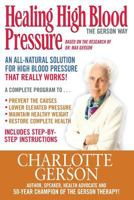Guarire con il Metodo Gerson (Italian Edition)
Select Format
Select Condition 
Based on Your Recent Browsing
Book Overview
Guarire secondo il metodo Gerson - Edizione italiana, scritto in uno stile di facile lettura con istruzioni passo passo per implementare la Terapia Gerson. Sebbene sia nota soprattutto per il suo successo nell'aiutare le persone a guarire molti tipi di cancro, la terapia Gerson ha un'eccellente esperienza nell'aiutare a superare praticamente tutte le altre malattie degenerative e croniche.
Charlotte chiarisce la scienza della Terapia Gerson e dimostra chiaramente perch la nostra dieta moderna, ricca di sostanze chimiche e priva di nutrimento, una causa fondamentale dell'attuale peggioramento della crisi sanitaria. Soprattutto, offre un programma nutrizionale naturale e potente che ricostruisce e riavvia il tuo sistema immunitario, ristabilendo le difese naturali del tuo corpo e riportandoti in completa salute.
Con capitoli dedicati a ogni processo e procedura, dalla ricerca dell'attrezzatura giusta e come utilizzarla, alla preparazione del cibo, all'uso di integratori, suggerimenti e suggerimenti per rendere le cose pi facili e molto altro ancora, comprese oltre 150 ricette approvate da Gerson.
La Terapia Gerson qualcosa che puoi fare adesso per prendere il controllo della tua salute. Non dimenticare di cercare Coffee, The Gerson Way, poich l'unico caff consigliato per la disintossicazione, alla maniera Gerson.
This is Healing The Gerson Way - Italian Edition.











![Paperback Guarire con il Metodo Gerson [Italian] Book](https://i.thriftbooks.com/api/imagehandler/m/3D7D15D17713F6863FBE3593FECBAD6D98212D03.jpeg)
































